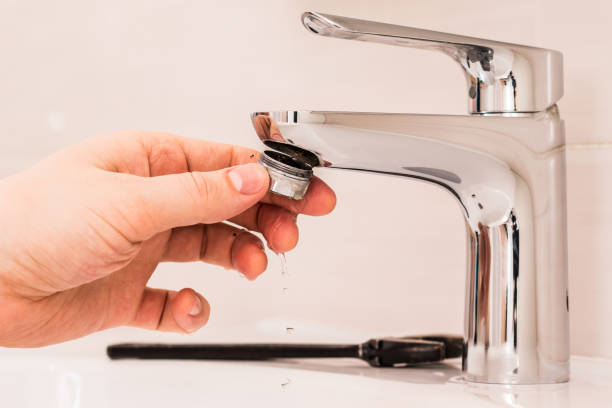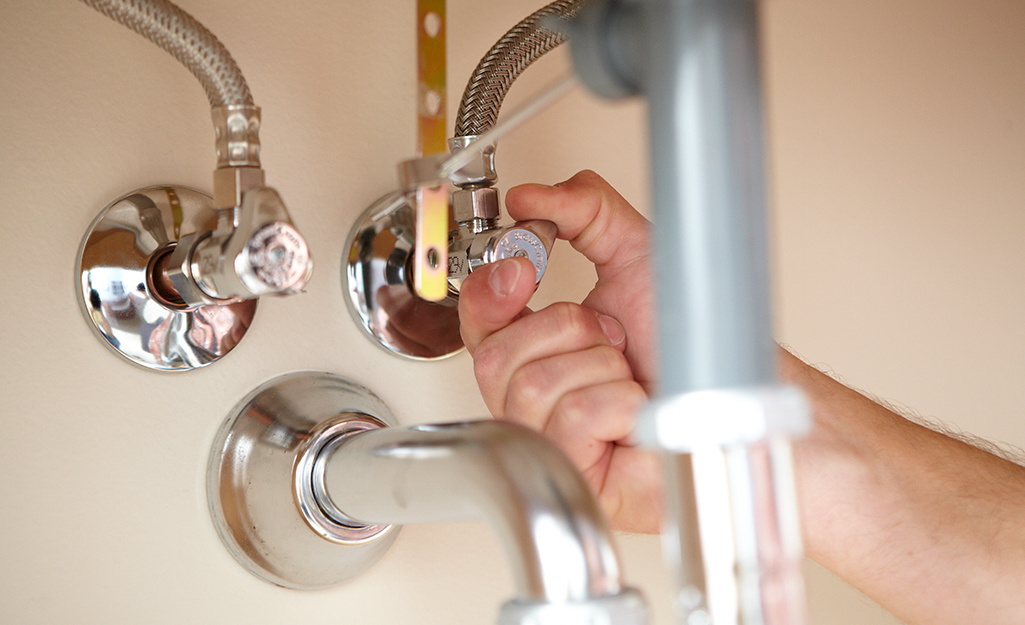Our Explanations Behind Resolving a Leaking Faucet
Our Explanations Behind Resolving a Leaking Faucet
Blog Article
What're your ideas on Why Are My Faucets Dripping (And Can I Fix It Myself)??

Dripping taps may seem like a minor aggravation, yet their impact exceeds simply the aggravation of the sound. From drainage to incurring unnecessary monetary costs and health threats, ignoring a leaking tap can bring about various effects. In this short article, we'll look into why it's vital to resolve this usual home problem without delay and effectively.
Wastage of Water
Ecological Effect
Dripping taps contribute dramatically to water wastage. According to the Environmental Protection Agency (EPA), a solitary tap dripping at one drip per secondly can waste more than 3,000 gallons of water annually. This not just pressures water sources yet additionally affects communities and wildlife dependent on them.
Step-by-Step Guide to Repairing a Dripping Faucet
Tools Required
Before trying to repair a leaking faucet, gather the essential tools, including an adjustable wrench, screwdrivers, replacement components (such as washing machines or cartridges), and plumber's tape.
Typical Faucet Issues and Their Solutions
Recognize the sort of faucet and the specific issue creating the drip. Typical problems consist of worn-out washing machines, corroded shutoff seats, or faulty O-rings. Describe producer instructions or on the internet tutorials for detailed assistance on repairs.
Financial Prices
Increased Water Expenses
Past the environmental effect, trickling taps can inflate water expenses considerably. The built up waste with time translates into greater energy costs, which could have been avoided with prompt repair services.
Potential Home Damages
Additionally, prolonged trickling can result in harm to fixtures and surface areas surrounding the tap. Water buildup can create staining, deterioration, and even structural issues if left unattended, leading to extra fixing expenses.
Health Issues
Mold and Mold Development
The continuous presence of dampness from a leaking faucet develops an excellent atmosphere for mold and mildew development. These fungi not just compromise interior air quality however also present health threats, particularly for people with respiratory conditions or allergic reactions.
Waterborne Conditions
Stagnant water in dripping taps can come to be a breeding ground for germs and various other virus, increasing the danger of waterborne illness. Impurities such as Legionella microorganisms grow in stationary water, possibly bring about significant illnesses when ingested or inhaled.
Do it yourself vs. Specialist Repair
Advantages and disadvantages of DIY Repair
While some may try to deal with a trickling faucet themselves, do it yourself fixings include their own set of obstacles. Without appropriate knowledge and tools, DIY attempts can aggravate the issue or cause insufficient repair work, extending the trouble.
Advantages of Working With an Expert Plumber
Employing an expert plumber ensures that the underlying root cause of the trickling faucet is addressed efficiently. Plumbing professionals have the knowledge and devices to detect and fix tap problems effectively, saving time and reducing the risk of further damage.
Ecological Duty
Private Contribution to Conservation
Taking duty for dealing with leaking faucets straightens with wider efforts toward water preservation and ecological sustainability. Every individual's activities collectively make a significant influence on protecting precious resources.
Lasting Living Practices
By prioritizing timely repair services and embracing water-saving practices, individuals add to sustainable living practices that profit both present and future generations.
Preventive Measures
Regular Maintenance Tips
To avoid dripping taps, carry out regular maintenance such as cleaning aerators, evaluating for leaks, and changing worn-out components promptly. In addition, consider setting up water-saving tools or upgrading to extra efficient components.
Relevance of Prompt Repair Works
Attending to trickling faucets as soon as they're noticed stops more water wastefulness and potential damage, ultimately saving both water and money over time.
Effect On Residential Or Commercial Property Value
Understanding of Well-Maintained Residential Property
Keeping a property in good condition, consisting of resolving upkeep problems like leaking faucets, boosts its viewed value and worth amongst prospective buyers or lessees.
Influence on Resale Value
Characteristics with well-maintained plumbing components, including taps, command higher resale worths in the property market. Dealing with trickling taps can contribute to a positive perception throughout residential or commercial property examinations and negotiations.
Conclusion
Attending to a trickling tap surpasses mere benefit; it's a necessary action towards preserving water, lowering monetary expenses, and guarding wellness and building. Whether via do it yourself fixings or specialist help, acting to repair dripping faucets is a tiny yet impactful method to promote responsible stewardship of resources and contribute to a much healthier, a lot more sustainable future.
How to Fix a Leaky Faucet: Step-by-Step Repair Guide
A leaky faucet may seem like a simple annoyance, but if it's not fixed promptly, that leak could cost hundreds to potentially thousands. From water damage to mold, mildew, and high water bills, even a tiny leak can be catastrophic if left unattended. Damage like this can even affect the overall value of your home, so it's important to take the right approach for leaky faucet repair. You may need the help of a plumber in some cases, but we've got a few tips you can try on how to fix a leaky faucet before calling the pros.
Four Faucet Types
When you're learning how to fix a leaky faucet, the first step is knowing what kind of faucet you're working with! There are four common types.
Cartridge Faucets
Cartridge faucets come in one- or two-handled varieties. In one-handled cartridge faucets, hot and cold water combines in a single cartridge. In the two-handled versions, hot and cold water are controlled separately and mixed in the faucet.
Ball Faucets
Ball faucets have a single lever you push up and down to adjust the pressure and rotate to change the temperature. A slotted metal ball controls the amount of water allowed into the spout.
Compression Washer Faucets
They're the oldest type of faucet, but they're still used in many homes — especially older ones. Compression faucets have two separate handles that, when turned, raise or lower the washer that seals a water valve. This valve stops water from flowing through the faucet when it is turned off.
Disc Faucets
Disc faucets rarely need to be repaired due to their maintenance-free design. The water flow is controlled by two discs — the upper one raises and lowers against a fixed lower disc, creating a watertight seal. If your disc faucet starts leaking, you may need to replace the seals or clean residue buildup from the inlets.
Fixing a Leaky Faucet
Step 1: Turn Off the Water
Whether you're learning how to fix a leaky bathtub faucet or how to fix a leaky kitchen faucet, always turn off the water supply to your working area when you're fixing a leak. The last thing you want is a flood added to your list of things to fix.
Look for the shutoff valves below your sink or around the tub and turn them clockwise to stop the water flow. If your faucet doesn't have shutoff valves, you may need to turn off the water for the whole house. Check to make sure it's off by turning the faucet on. If nothing comes out, you're ready to start the repair.
Step 2: Take Apart the Faucet
How you disassemble your faucet depends on the type of fixture you have. You can use a flathead screwdriver to remove the caps on top of the handle or handles for cartridge and compression faucets. Inside, you should see handle screws. Unscrew these with a screwdriver to remove the handle.
Disc- and ball-style faucets will typically have an inlet screw near the handle, and removing that will reveal the interior of the faucet.
Detach the Valve Stem
For cartridge- and compression-style faucets, you'll see the inner valve stem or cartridge once you remove the faucet handles. If you have a compression faucet, unscrew the brass valve stem. If you have a cartridge faucet, pull out the cartridge. If your cartridge has been in place for a while, it may require some tools or extra force to remove it due to mineral deposits.
Examine and Replace Parts
Once you've removed the parts, check them out to confirm what needs to be replaced. You may see corroded rubber washers, O-rings, stems, or cartridges. On a ball-style faucet, check the seats and springs for damage.
If you need to repair a leaky disc faucet, check the inlet and seals on the lower disc.
Once you determine what parts must be replaced, visit your local hardware store. Bring the damaged parts with you to ensure you can purchase the correct components to replace them.
Clean Valves and Faucet Cavity
If you've removed a stem or cartridge, you may notice mineral buildup in the faucet's threads. Use white vinegar to clean the valve seat by soaking it for a few minutes, then scrub it away with a soft toothbrush and rinse with warm water. You can also clean the interior of the faucet in the same way.
Reassemble the Faucet
Once your faucet is cleaned and the required parts have been replaced, it's time to reassemble it. Put the pieces back together and slowly turn the water supply back on. Doing this slowly is crucial because too much initial water pressure can damage the new hardware you've just installed.
https://homewarranty.firstam.com/blog/how-to-fix-leaky-faucet

I am very occupied with Why Are My Faucets Dripping (And Can I Fix It Myself)? and I am hoping you liked the page. Sharing is caring. Helping others is fun. Thanks for going through it.
Report this page